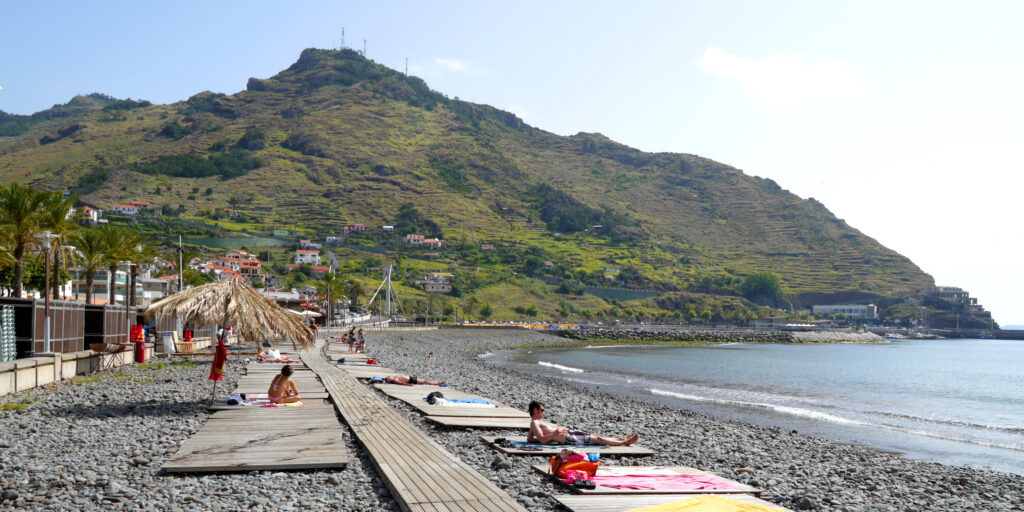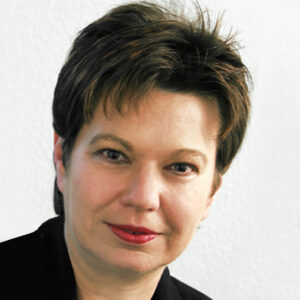
Machico – Where It All Began!
Machico is situated in a vast bay in the east of Madeira and extends deep into the fertile valley that stretches northward. The river flowing through the town divides the development into the historic center in the west and the old fishing district in the east. As Madeira’s second-largest city, Machico boasts a charming old town, tree-lined avenues, and squares shaded by plane trees.
History of Machico
Machico is the oldest settlement on the island. In July 1419, Portuguese explorers Gonçalves Zarco, Tristão Vaz Teixeira, and Bartolomeu Perestrelo landed here and declared Madeira as a possession of the Portuguese Crown. During the settlement period (1420–1425), King João I distributed the land among his three trusted captains:
- Tristão Vaz was appointed captain of the eastern part of the island, with Machico as his seat – a statue of him still stands there today.
- Bartolomeu Perestrelo received the district of Porto Santo.
- João Gonçalves Zarco took charge of the southwestern half of Madeira from Funchal.
These captains were granted extensive powers: they could levy taxes on land, sugar mills, bakeries, and salt and distribute uncultivated land to noble landlords. By 1440, Machico had become Madeira’s first capital, flourishing thanks to its abundant water supply and excellent climate. The first mills transformed sugarcane into „sugar loaves,“ which were exported across Europe. This lucrative trade brought Machico economic success, enabling influential families, such as the Capitães-Donatários, to gain social and political power. This prominent family built Machico’s main church at the end of the 15th century, dedicating it to Our Lady of the Conception.
However, Zarco and Teixeira may not have been the first Europeans to set foot on Madeira. According to legend, the town was named after an Englishman named Machim, who was shipwrecked at this very spot in 1344 with his bride. Zarco and Teixeira lent credibility to this tale when they reported finding a simple wooden cross with a Latin inscription, which they translated as:
„Here came Machim, an Englishman, driven by the storm, and here lies Anne d’Arfet, a woman who was with him.“
Sights & Attractions of Machico
Machico offers a wealth of sights, most of which are concentrated in the historic center:
Nossa Senhora da Conceição Church
Located on the north side of the main square, Nossa Senhora da Conceição (Our Lady of the Conception) is one of Madeira’s most impressive churches. Built in 1499 when Machico was still the capital, it features a beautiful arched portal, donated by King Manuel I, and a baroque interior with a statue of the Virgin Mary.
Capela dos Milagres
A short walk across the bridge to the old fishing district leads to the Chapel of Miracles. This baroque church stands on the site of a 15th-century hermitage that was destroyed in the great flood of 1803. It hosts the important Festa do Senhor dos Milagres festival.
Capela São Roque
Standing at São Roque Pier, this small 16th-century chapel is known for its blue-and-white azulejos (ceramic tiles). The original structure, a 15th-century votive chapel, inspired the tiles that remain today. As early as the 15th century, the people of Machico vowed to build a chapel to Saint Rochus São Roque) in gratitude for saving them from the plague.
Forte Nossa Senhora do Amparo
Situated behind São Roque Beach, this fortress was built in the early 18th century to protect the town from pirate and corsair attacks. Its distinctive triangular design allowed for effective defense of both sides of the bay.
Fortress of São João Baptista
An 18th-century heritage site, this fortress sits at the northern end of the bay above Machico’s pier. Closely linked to the first Portuguese landing on the island, it is now a ruin.
Paços do Concelho
This neoclassical building houses Machico’s municipal services and stands as an outstanding example of the city’s civil architecture.
Solar do Ribeirinho
This 17th-century manor house has served as a local history museum since 2007. Its diverse collection illustrates Machico’s economic, social, and cultural history from the 15th to the 20th century.
Aqueduct of Machico
Built in the 19th century between Caminho do Engenho and Rua da Estacada, this structure supplied water to the Machico sugar mill. Eight of the original 14 arches, made from red stone from Caniçal, remain intact. Spanning 4.4 meters, the aqueduct was restored in 2001 and is now a protected site of municipal interest.
(View via Google Street View: https://bit.ly/streetview_aquaduct)
Solar de São Cristóvão
This 17th-century manor house, now a museum, is a well-preserved example of Madeira’s aristocratic architecture. Despite centuries of changes, many original structures remain, such as the stone-based wood-fired oven in the kitchen. The exhibition also showcases important furniture made of mahogany, walnut, and oak from the 17th to 19th centuries.
Beaches of Machico
Machico has two beaches:
São Roque – A black-sand pebble beach on the right (looking from the river mouth), popular among locals. A small pier and a large esplanade connecting Forum Machico with Nossa Senhora do Amparo Fortress shape the scenery. Restaurants, bars, and a children’s playground provide comfort.
Praia da Banda Além – About 125 meters long and 70 meters wide, this beach (to the left of the river) is unusually covered in yellow sand imported from Morocco. Sheltered by the breakwaters of Machico’s small marina, it offers showers, parking, restaurants, and lifeguard services, making it ideal for a relaxing beach day.

Besides the beaches, Machico is an excellent base for water sports such as windsurfing, stand-up paddling, sport fishing, diving, and boat tours along the stunning coastline.
Culinary
Machico’s culinary scene is based on traditional seafood and farm produce, influenced by the seafarers who once passed through. Typical specialties include:
- Sopa de trigo – a wheat soup
- Carne de vinho e alhos – marinated meat in wine and garlic
- Bolo de caco – a flatbread baked on hot stone, often served with garlic butter
Culture & Festivals in Machico
Machico hosts several cultural and religious events that celebrate Madeira’s history and traditions:
Gastronomic Week (Semana Gastronómica) – A major food festival featuring local specialties, music, and entertainment, held annually in July/August.
Mercado Quinhentista (Medieval Market) – A historical reenactment festival in early June, reviving 500-year-old traditions. It has won a gold medal for tourism excellence.
Sopas com História – A soup competition held in October, where public institutions compete to create the best traditional soup, accompanied by live music.
Hiking & Viewpoints
The surroundings of Machico offer impressive views and varied hiking trails:
Pico do Facho – A viewpoint at 322m offering panoramic views over Machico, Caniçal, and the Ponta de São Lourenço Peninsula.
Vereda das Funduras – An 8-km trail through Madeira’s largest laurel forest.
Vereda da Ribeira do Natal – A scenic coastal hike connecting Machico and Caniçal.
Levada dos Maroços – A 12-km easy hike following one of Madeira’s famous levadas, showcasing the region’s rural charm.
Conclusion
Machico seamlessly blends modern tourism with deep-rooted traditions and historical significance. Well connected by public bus from Funchal, this diverse town is well worth a visit.
Machico can be reached by bus. Get on the SIGA CAM lines 20, 23, 53, 78, 113, 156 or 208 at Avenida do Mar and arrive in the centre of the town after an enjoyable journey.
Looking for more stress-free adventures on Madeira?
“Madeira by Bus” is your ultimate travel companion, featuring detailed bus schedules, insider tips, and must-visit destinations across the island. Whether you’re a first-time visitor or a seasoned explorer, this guide makes it easy to plan your journey.
👉 Get your copy today at www.madeira-by-bus.com/read and start exploring Madeira the eco-friendly way!


